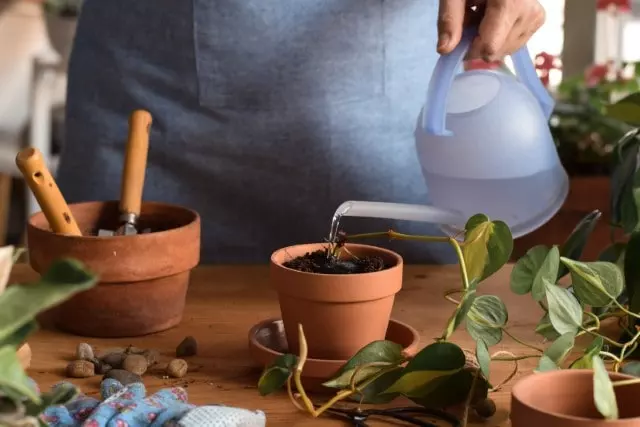The question of how to save an overwatered pothos is more common than it seems. There is no gardener who, on occasion, has not fallen into the bad habit of overwatering. Something that not only happens in novice gardeners who are just starting in the world of plants. It can also be a failure in more advanced gardeners who fall into one of the typical mistakes when caring for plants: not knowing the needs of a particular species.
It is never a good idea to overwater plants in general, let alone pothos. If your pothos is lacking water, there is a simpler solution than recovering an overwatered pothos.
Avoid the hassle. Because, although it is possible to recover overwatered pothos, it does not always have an effect. But in this article, we will explain everything you need to know to save your overwatered pothos.
Table of Contents
Why Is It Bad to Overwater Pothos?
Why Is It Bad to Overwater Pothos? Before knowing how to identify overwatering in pothos, it is important to understand the effects it has. Because how is it possible for overwatering to be so bad? Well. To understand this, it is important to know that the roots also need to breathe. When overwatered, the pothos cannot exchange gases properly and cannot absorb nutrients. This is called root asphyxia.
But this is not the only effect that overwatering has on pothos. As a consequence of overwatering and lack of oxygenation, the roots can be affected by fungi. The fungus can complicate the recovery of overwatered pothos. And not because fungicides do not do their job, although they need time and perseverance to act. Rather, the problem lies in the fact that their detection is often late.
Common Signs of Overwatered Pothos
The starting point to start all possible gardening work to recover an overwatered pothos is to know if the plant is suffering. This will manifest itself in different ways and needs observation. Time is a definite factor when it comes to recovering overwatered pothos.
Some of the symptoms that can be detected in overwatered pothos are:
- Absence of new shoots on the plant.
- Weakening of the plant.
- Leaves that hardly grow or that are born in brown tones.
- Yellow leaves on pothos.
- Drooping of leaves.
- The compacted substrate or even greenish.
- Narrowing of the base of the stem.
Curiously, these symptoms are often confused with those of lack of water in the pothos. This often leads to watering again, increasing the problem. Before watering again, the state of the soil should be checked. We are not talking about the superficial layer of the soil, but the deep ones. To know the moisture content of the soil, use your hands. If when introducing a finger between five and seven centimeters in the substrate, the humid soil adheres, we are in front of a case of overwatered pothos.
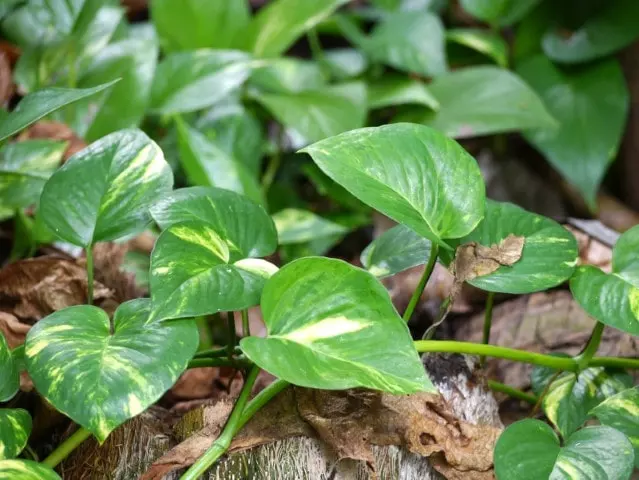
How to Save Overwatered Pothos Step by Step
After the pothos has been evaluated and the excess moisture has been detected, it is time to take action. Recovering overwatered pothos is not a complicated task. But it is not always possible to save a pothos with overwatering. It often happens that sometimes the pothos is already very affected by overwatering, and it is too late to save them, but here we will explain all the possible ways to save your pothos from overwatering.
Remove the Pothos from Its Pot and Let It Dry
The priority when recovering overwatered pothos is to remove the excess moisture. To do this, the first thing to do is to remove the pothos from its pot and, with great care, remove the soggy substrate adhering to the roots so as not to damage them further. The intention is that, by removing all the moisture, the pothos can breathe.
So that it does it in conditions, the ideal thing is that it is a brief period of drying. It will be enough to keep it in the air for 12 hours or, if it is very soaked, one day.
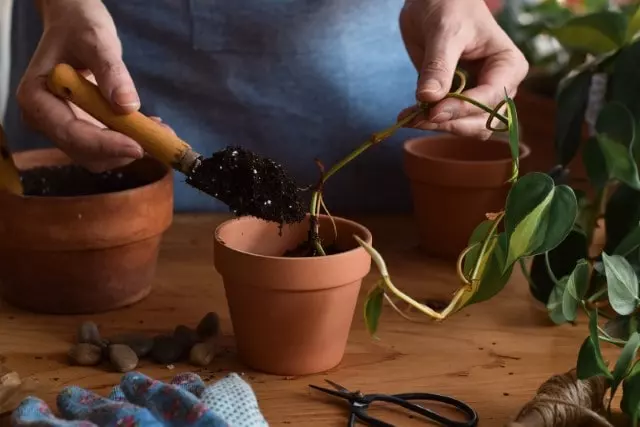
Root Pruning to Recover an Overwatered Pothos
As we said in the previous paragraphs, the victims of overwatering are always the roots. Therefore, before continuing, it is necessary to check the condition of the roots. If the roots are white, they are healthy. If you see black roots or roots that have begun to rot, the best thing to do is to prune them. In this way, we will be cleaning them up before planting again.
A Tip: if you are going to repot the pothos in the same pot, it is important to disinfect it. It will be enough to wash it thoroughly with alcohol or bleach. In this way, the fungus that could be there will disappear.
Apply a Dose of Fungicide
Even if you see the roots with good color and appearance, the fungi may have already made their presence felt. Perhaps their effects are not yet visible, but the fungus is probably already on the pothos roots.
To prevent the fungus from continuing to grow, it is best to apply a good dose of fungicide to the roots. Thanks to this type of product, the pothos roots will be prepared to fight against these invisible enemies that take advantage of excess water.
You should make a homemade fungicide with potassium bicarbonate. Potassium bicarbonate is safe for your pothos and will not harm the plant, it will only kill the fungus. Learn more in our article about how to get rid of mold in plant soil.
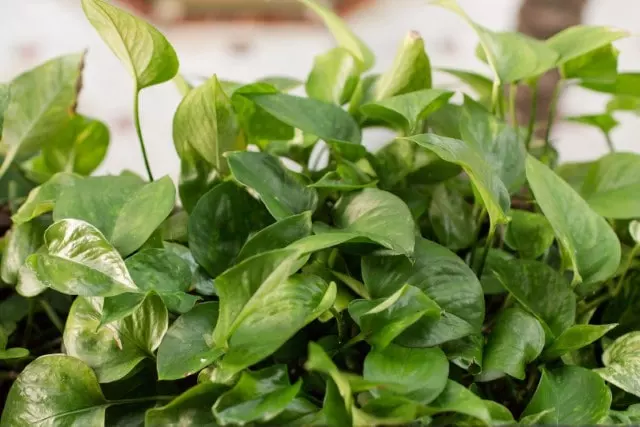
Repot Overwatered Pothos
Recovering an overwatered pothos is a full-fledged “restart”. A way to restart its cultivation, but also to offer it a space to grow rich in nutrients and with the right soil. Because that is precisely another of the problems of overwatering: the compacting of the soil. A state that prevents the roots from growing properly, but also from absorbing what they need for the plant’s development.
As important as using the right substrate for each type of plant is to create, previously, good drainage. Good drainage will help to prevent the substrate from becoming waterlogged. Decent drainage will allow correcting those overwatering more easily.
It is not a good idea to fertilize pothos when it is recovering from overwatering. Pothos roots are extremely sensitive and are not able to absorb as many nutrients. If you apply fertilizer at this time, it is likely that the pothos roots will burn because they are weak. Fertilize only when you notice that the plant has started to give new shoots.
Water the Pothos Again Only When the Substrate Is Dry
When to water pothos again? A logical fear that has a simple answer. Generally speaking, new substrates are extremely moisturizing. A good reason to space out the next watering until the surface layer is dry. Then and only then can the pothos be watered again.
If it is very hot, you can always lightly spray the leaves so that they do not dehydrate. Learn more about pothos plant care.
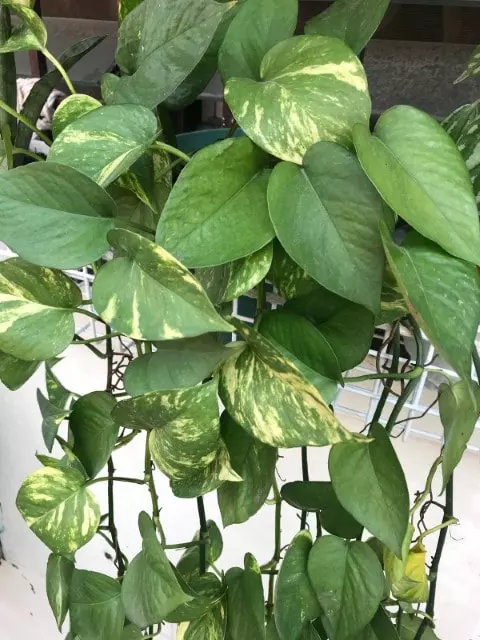
How to Water Pothos Plant
How to Water Pothos Plant? It depends on many factors such as light, time of year, or currents. As a general rule, it would be enough with “a correct weekly watering”. This is because pothos is a plant that does not require constant humidity in the soil, since it is a specialist in taking humidity from the environment with its characteristic aerial roots. The idea is to observe the plant and let the soil dry for a minimum of 2 or 3 days before watering.
Avoid stagnation of water in the soil or the saucer at the base of the pot, as this excess water is conducive to the development of fungus diseases.
When the ambient temperature is high, apart from watering, the leaves can be sprayed with a sprayer or by wiping with a damp cloth to maintain a good level of humidity.
For the pothos to develop better foliage, a fertilizer rich in nitrogen and potassium can be applied during the spring, which is added to the irrigation water every 15 to 20 days.
We hope this article on how to save overwatered pothus will be helpful. We recommend our article about how to propagate pothos in water.
